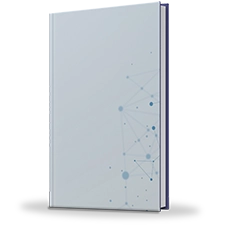Glycol Market Analysis :
Glycol is an organic compound with the chemical formula (CH2OH) 2. Glycol is primarily used for two purposes, it is used as a raw material in the production of polyester fibers and for antifreeze preparations. Properties of glycol are odorless, colorless chemical, sweet tasting, and gluey liquid. Furthermore, glycol is used as antifreeze in automobile cooling systems, synthetic fibers, brake fluid, and low-freezing explosives. Glycol is non-hazardous, sweetened, which is used in nutrients, oral hygiene, and personal products as an antibacterial, moisture-retaining agent, and solvent. In addition, glycol is used in several applications such as food packaging, film, toys, food containers, bottles, pipes, antifreeze, carpets, insulation, and animal feeds.
COVID-19 impact analysis
- The demand for personal hygiene and homecare products is expected to rise, due to the growing consciousness among consumers in the wake of the COVID-19 pandemic. Pandemic has made consumers more aware of need to maintain hygiene, at a personal level as well as at home, to reduce the chances of infection. This is likely to increase market demand for personal care products.
- The COVID-19 pandemic affects the global food industry as governments close down restaurants and bars to slow the spread of the virus. Closures of restaurants caused a severely impacted the related industries such as food production, liquor, wine, and beer production, food & beverage shipping, fishing, and farming.
- The textiles & apparels industry is one of the largest and the most significant sectors for the economy in terms of output, foreign exchange earnings, and employment. The global health crisis is primarily expected to impact the exports. Moreover, new store openings have stopped and even domestic stores are facing an inventory issue, as they have already buffered stock for piled up. The demands of textile and apparels have been drastically decreased.
Top impacting factors: market scenario analysis, trends, drivers, and impact analysis
The use of glycol extents across a variety of industries and the cooling properties of the compound help in completing various tasks. The organic feature of glycol has a major role in the growth of the global glycol market in recent times. The use of ethylene glycol in HVAC has developed as a key reason behind the growth of the global glycol market. Furthermore, increase in use of organic composite in food & beverage packaging drives the market growth.
Surge in demand for monoethylene glycol in manufacturing of the PET and polyester resins boosts the market growth. In addition, polyester fabrics are widely used in apparels, yarns & ropes, home furnishings, and other industrial applications such as insulating tapes and conveyer belts.
Increase in demand for glycol in the automotive industry is a foremost element expected to drive revenue growth of market. Ethylene glycol prevents automotive engine from freezing during the winter season, due to its much lower freezing point than water and acts as a coolant to decrease overheating in the summer. Furthermore, ethylene glycol is used in an automobile to absorb heat from the engine.
Technological developments in the packaging industry are expected to expand the variety of suitability of food products that include frozen, chilled, shelf-stable, microwavable, and prepared mixes. Rise in consumer spending in personal care and hygiene products such as moisturizers and sunscreen creams will boost the market growth.
However, fluctuations in the availability and prices of raw material such as ethylene, ethylene glycol, and acetaldehyde are hindering the growth of the market. Instability in oil prices are further hampers the glycol market growth.
Surge in usage of glycol in textile and leather applications
The global glycol market by region is segmented into North America, Europe, Asia-Pacific, and LAMEA. Asia-Pacific garnered a higher share of the glycol market across the globe. Increase in demand for textile and leather products is expected to boost the market for glycol in Asia-Pacific. Moreover, demand for glycol is growing in cosmetics and personal care industries in China and India, which is likely to boost the market in Asia-Pacific. Among all the end-use industries, the furniture industry is increasingly using polyester fibers as a cushioning material in comforters, pillows, and upholstery padding. The rising demand for polyester fibers and films for several textiles and fibers industries applications will be a substantial element that contributes toward the growth of the ethylene glycol market.
Key benefits of the report
- This study presents the analytical depiction of the global glycol market along with the current trends and future estimations to determine the imminent investment pockets.
- The report presents information related to key drivers, restraints, and opportunities along with detailed analysis of the global glycol market share.
- The current market is quantitatively analyzed to highlight the market growth scenario.
- Porter’s five forces analysis illustrates the potency of buyers & suppliers in the market.
- The report provides detailed market analysis depending on competitive intensity and how the competition will take shape in coming years.
Questions answered in the global glycol market research report:
- Which are the leading players active in the global glycol market?
- What are the upcoming trends in the global glycol market?
- What are the driving factors, restraints, and opportunities of the market?
- What are the projections for the future that would help in taking further strategic steps?
Glycol Market Report Highlights
| Aspects | Details |
| By Type |
|
| By Application |
|
| By End-use Industry |
|
| By Region |
|
| Key Market Players | Huntsman Corporation, Indorama Venture, ExxonMobil, INEOS Group Ltd., Clariant, Formosa Plastics, Dow Chemical Company, BASF, SABIC, Reliance Industries Ltd., LyondellBasell, Sinopec, Eastman Chemicals, Royal Dutch Shell, China Petroleum & Chemical Corporation |
Loading Table Of Content...



